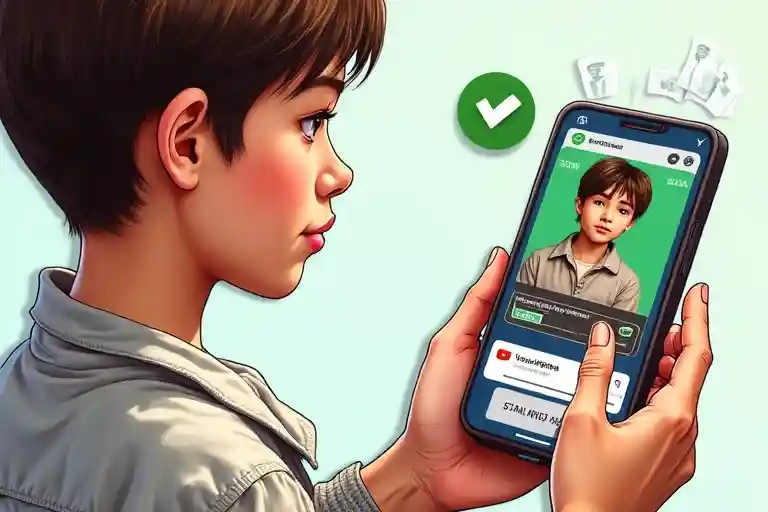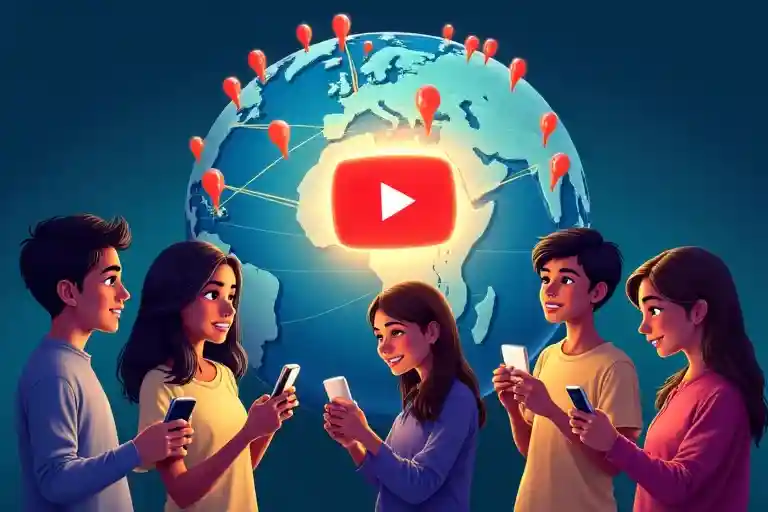Alright, let’s get straight into it! You’ve probably seen stuff online about get paid to click sites and wondered, “Is this for real, or just another internet myth?” Especially when you’re a teen looking to make some extra cash for that new game, concert tickets, or just to have a bit of independence money, the idea of earning by simply clicking sounds pretty awesome, right? Well, hold up a sec! It’s not *quite* as simple as click-click-boom, you’re rich (sorry to burst that bubble!), but there ARE ways to make a little something. This article is going to be your ultimate guide. We’re talking about what these sites actually are, how to spot the legit ones from the total scams (because, ugh, they exist), realistic expectations for how much you can *actually* earn, and super important safety tips because your online security is EVERYTHING. We’ll even look at some alternatives if clicking ads all day isn’t your vibe. Think of this as your friendly older sibling guide to navigating the world of get paid to click sites. I was pretty curious myself to see what the actual deal was with these platforms for people our age! Last updated: May 2025.
Before we dive deeper, it’s worth checking out some other ways teens can earn. For instance, some platforms offer various tasks beyond just clicks, you can learn more about paying PTC sites to earn cash. Understanding the landscape of online earning is key!
What Exactly Are “Get Paid to Click Sites” and How Do They Work?
So, what’s the tea on get paid to click sites, often called PTC sites? Imagine this: companies want people to see their ads or websites. Instead of (or sometimes in addition to) paying for traditional ads on big platforms, they pay these PTC sites. The PTC sites then share a tiny slice of that money with people like you for, well, clicking on those ads and viewing them for a certain amount of time – usually like 5 to 30 seconds. It sounds like a win-win, and sometimes it can be a small one. You click an ad, maybe answer a super short question to prove you’re human (and not a bot trying to finesse the system, like “select the cat picture” – easy peasy), and a fraction of a cent gets added to your account. Think of it like this: you’re getting paid a tiny amount for your attention. It’s one of the simplest forms of trying to earn money online, which is why it attracts a lot of people, especially younger folks who might not have a ton of work experience. But (and it’s a BIG but), the earnings per click are usually VERY small. We’re talking fractions of a cent. So, you’d need to click a LOT of ads to make even a few dollars. It’s definitely not a “get rich quick” scheme, more like a “get a tiny bit of pocket money very slowly” scheme.
Understanding the Business Model: Why Would Anyone Pay for Clicks?
You might be thinking, “Why would a company pay me, a teenager, just to look at their website for 10 seconds? Sounds kinda sus.” And that’s a smart question to ask! Companies use PTC sites for a few reasons. Sometimes, it’s to boost their website traffic numbers quickly, hoping that some of those visitors might actually be interested in their product or service. Other times, it’s to get eyeballs on a new product launch. For advertisers, it can *seem* like a cheap way to get exposure. However, the quality of this traffic is often debated. As the ClickCease blog points out, many PTC sites can unfortunately be riddled with bots or users who are only there for the cash and have zero interest in the actual ad content. This is why it’s a bit of a controversial area. For you as a user, it means the companies paying aren’t expecting every clicker to become a customer, they’re playing a numbers game. Your role is simply to view the ad as instructed. This low-commitment nature is what makes get paid to click sites initially appealing, but it also explains the low payout rates. They aren’t paying for a guaranteed sale, just a brief moment of your attention. It’s a volume game for both the PTC site and its users.
Get paid to click sites for free
Okay, so the “free” part of get paid to click sites for free is a big draw. And it’s true! Legit PTC sites should NOT ask you for money to join. If a site is asking for a membership fee just so you can start clicking ads, that’s a HUGE red flag. Like, imagine TikTok charging you to watch videos before you can even see if you like the content – wild, right? The whole point is that *they* are supposed to be paying *you*, however little it might be, for your time and attention. So, always look for platforms where signing up is completely free. Your investment is your time, not your cash. This accessibility is a major reason why teens might consider these sites – no upfront costs, just an internet connection and some patience. But remember, “free to join” doesn’t automatically mean “great earnings.” It just means you don’t have to pay to play. Keep your Spidey-senses tingling for any site that tries to flip that script. The good news is that many click and get paid sites operate on this free-to-join model, so you have options.
Finding Reputable Free PTC Sites: Not All Clicks Are Created Equal
So, how do you find those which can be certainly official and won’t simply waste your precious display screen time (or worse, try to rip-off you)? First, do your homework! Search for opinions of the PTC site you’re thinking about. Look for reviews on multiple platforms, no longer simply testimonials on their personal internet site (those may be faked, obvs). Are human beings sincerely getting paid? Are there plenty of complaints approximately debts being unfairly closed or bills being withheld? That’s a main “yikes!” Second, take a look at how long the web site has been around. Newer web sites are not routinely bad, however older, extra hooked up sites regularly have a music record you could look into. Third, look for clean statistics approximately how and whilst you get paid. Do they have got a minimal payout threshold (the amount you want to earn before you may coins out)? Is it ridiculously excessive? If you want to earn like $one hundred before cashing out and each click is $0.001, properly, you do the maths – that’s an entire life fulfillment award proper there! Look for websites with affordable payout thresholds and charge techniques that work for you (like PayPal, when you have parental permission for an account, or gift playing cards). Some platforms also offer insights into website paid-to-click strategies which might give you an idea of their legitimacy and focus.
What Kind of Tasks Can You Expect? (Beyond Just Clicks)
While “clicking ads” is the main gig with get paid to click sites, many platforms have branched out to keep users engaged (and clicking!). You might locate “offerwalls” where you can earn more through completing slightly extra worried duties. These should consist of such things as signing up without spending a dime trials of offerings (usually read the high-quality print and be cautious approximately cancellations!), downloading apps (again, take into account of permissions and what you’re downloading), taking quick surveys (can be a bit more moneymaking than simply clicks), or even playing easy on line games. Sometimes these duties pay a bit higher than simply viewing an ad for 10 seconds. For instance, a survey would possibly pay $zero.50, which is way more than the $0.001 for a click. However, those responsibilities additionally take more effort and time. It’s like selecting among looking a fifteen-2d TikTok for a tiny reward or attractive with a longer YouTube tutorial for a barely better one. Some human beings decide upon to stick to senseless clicking even as looking Netflix, others would possibly try and maximize their earnings by means of tackling those extra diverse gives. The secret’s to look what is to be had and determine what is really worth your time.
Pay per click sites make money online: The Real Deal for Teens
Let’s be brutally honest about pay per click sites make money online. Can you make *some* money? Yes, technically. Are you going to be rolling in dough, buying the latest iPhone every release, or funding your college education this way? Absolutely not. Think of it more like finding a quarter on the sidewalk – it’s a little something, but it’s not life-changing. The “real deal” for teens is that these sites can be a very, very slow way to earn a very, very small amount of pocket money. If you go in with super low expectations, understanding that you’re trading significant time for minimal financial reward, then it *might* be a way to kill some boredom and get a few bucks for a coffee or an in-app purchase eventually. But if you’re looking for a serious side hustle or a way to make substantial income, this probably isn’t it, chief. Many teens find more value in other online avenues. Still, exploring different paid to click websites to earn can be an initial step into understanding online income, even if it’s small.
Realistic Earning Potential: No Get-Rich-Quick Schemes Here!
When we talk realistic earning potential with get paid to click sites, we’re talking pennies, or even fractions of pennies, per click. Imagine a TikTok trend where you get a tiny reward for every video you watch – it would take *ages* to add up to anything substantial. If a site promises you $1 or, even crazier, $10 per click, run for the hills! That’s almost certainly a scam. As mentioned in a review of PTC sites and whether they are worth it, like one from Surveynow, the typical earning per click is extremely low. You might see figures like $0.001 to $0.01 per ad view. So, to make $1, you’d need to click anywhere from 100 to 1000 ads. That’s a lot of clicking! Some people try to be active on multiple sites, but then you’re juggling different interfaces and payout minimums. It’s important to be brutally honest with yourself: the earning potential is very limited. If you enjoy the process, or you’re doing it while multitasking (like during loading screens in a game, with parental permission of course!), then maybe. But don’t expect to see big numbers in your account quickly. It’s more like a digital piggy bank you add micro-amounts to.
Time Investment vs. Reward – Is It Worth Your TikTok Time?
This is the million-dollar question (well, maybe the five-dollar question in this context!). Is the time you spend on get paid to click sites worth the tiny reward you get? Think about how much time you spend scrolling TikTok or Instagram. It’s fun, it’s engaging, you see cool stuff. Now imagine spending that same amount of time clicking ads, often for things you have zero interest in, for a return that might buy you a pack of gum after a week. For many teens, the answer is a resounding “nah.” Your time is valuable! You could be learning a new skill, doing homework (yeah, I know, but it’s important!), creating your own content, or even exploring other online earning methods that pay better for your time, like freelancing small tasks if you have a skill, or even some online survey sites which tend to pay a bit more than basic PTC clicks. If you genuinely find it a mindless, easy thing to do while you’re bored and have nothing else pressing, then maybe. But if you’re sacrificing other, more rewarding activities (financially or personally), then it’s probably not a good trade-off. Consider this: an hour spent learning a basic graphic design skill could lead to much higher earning potential down the line than an hour of clicking ads for 30 cents.

Get paid per click on your link
Now, the phrase “get paid per click on your link” can mean a couple of things. Mostly, in the context of PTC sites, it refers to their referral programs. This is where you get a unique link, and if you share it with friends and they sign up and start clicking, you earn a small commission based on their activity. It’s like when your favorite gamer has a referral code for a product – they get a kickback if you use it. This is one way that some users try to boost their earnings on PTC sites without having to do *all* the clicking themselves. The idea is that if you refer enough active people, their clicks can generate a passive income stream for you. However, the commissions are usually tiny, just like the earnings per click. So, you’d need a LOT of active referrals to make a significant difference. It’s not as simple as just spamming your link everywhere; you need people who will actually use the site. For some, this becomes a mini-game in itself – trying to build a downline of referrals. Be careful not to annoy your friends though! No one likes a link spammer. Some users also look for insights on how to get paid for clicking ads more effectively, which often includes leveraging referral systems.
Referral Programs on PTC Sites: Sharing is Caring (and Earning a Bit Extra)
Let’s dive a little deeper into these referral programs on get paid to click sites. How do they work? Usually, once you sign up for a PTC site, you’ll find a section for “referrals” or “affiliates.” There, you’ll get a unique URL. If someone clicks that link and signs up, they become your direct referral. You might earn a small percentage of their earnings, or a tiny flat fee per ad they click. For example, if they earn $0.001 for a click, you might get 10% of that, which is $0.0001. Yeah, not exactly making it rain! Some sites have multi-level referral systems, where you can also earn from the referrals of your referrals, but these often get complicated and the earnings become even more diluted. The key to making referral programs work, even a little, is to refer people who will actually be active. Ten active referrals are better than 100 who sign up and do nothing. Some people try to promote their links on forums or social media (where allowed – always check the rules!), but again, success often requires a lot of effort for potentially small returns. It’s an option to explore, but don’t count on it to make you a PTC millionaire. Think of it as a small bonus if you happen to know others interested in these platforms.
Understanding How Payouts Work (Thresholds, Payment Methods – Teen Relevant)
This is SUPER important when dealing with get paid to click sites. Before you even click your first ad, you need to understand how you’ll get your (eventual) money. First, almost every site has a “minimum payout threshold.” This is the smallest amount of money you need to have in your account before you can request a withdrawal. This can range from $1 (rare, but awesome) to $5, $10, or even higher. Be wary of sites with very high thresholds, like $25 or $50, especially if the earnings per click are tiny. It could take you *months* or even *years* to reach that, and who knows if the site will even be around that long? Look for lower, more achievable thresholds. Next, check the payment methods. For teens, this is crucial. Many sites pay via PayPal. If you’re under 18, you typically need a parent or guardian to help you set up or manage a PayPal account under their name, or a student account if available and compliant with PayPal’s terms in your region. Some PTC sites also offer payment in cryptocurrencies (be VERY careful here, it’s volatile and complex, probably not ideal for your first online earnings unless you and your parents are crypto-savvy) or gift cards (like Amazon, iTunes, or Google Play). Gift cards can actually be a pretty good option for teens as they’re straightforward to use. Always verify the payment options *before* you invest your time. Make sure it’s something you can actually receive and use, and that your parents are okay with it.
Highest paying pay per click affiliate programs
When you see “highest paying pay per click affiliate programs,” it’s important to distinguish this from standard PTC sites. True pay-per-click affiliate programs are usually for website owners or content creators who can drive traffic to an advertiser’s site. The “pay per click” here means the *advertiser* pays the *publisher* (the person with the website/blog/social media following) for each click an ad receives on their platform. This is different from *you* getting paid to click an ad on a PTC site. While some PTC sites might have referral programs that feel a bit like affiliate marketing, genuine high-paying PPC affiliate programs (like some in finance, software, or high-value retail) are generally not something a teen just starting out would be directly involved in as a publisher. For the context of this article, when we talk about “higher paying” in the realm of get paid to click sites, we mean finding PTC platforms that might offer slightly better rates for clicks, or more diverse, better-paying tasks like surveys or micro-jobs *within* the PTC site itself. Don’t get confused and think a standard PTC site will offer you the kind of rates that major affiliate marketers get. The scale and model are totally different.
Comparing PTC Platforms: What to Look For Beyond Just the Click Rate
So, if you’re determined to try out get paid to click sites, how do you compare them beyond just that tiny fraction-of-a-cent click rate? First, as we said, look at the minimum payout threshold and available payment methods. A site that pays $0.002 per click but has a $50 minimum payout might be worse than a site paying $0.001 per click with a $2 minimum payout. You’ll get your (small) reward much faster on the second one! Second, check for an active user forum or community. This can be a good sign that the site is legitimate and that people are engaging with it. You can often find payment proofs (screenshots from users showing they got paid) and get tips from other members. Third, see what other ways to earn are offered. Do they have an offerwall with surveys, app downloads, or other tasks? These can sometimes boost your earnings faster than just clicking ads. For example, JumpTask highlights various GPT (Get-Paid-To) sites, which often combine PTC with other micro-earning opportunities. Variety can make the experience less monotonous and potentially more (slightly) rewarding. Fourth, look for professionalism. Does the site look like it was made in five minutes, or is it well-designed and easy to navigate? Are their terms and conditions clear? These little things can be indicators of a more reliable platform.
Beyond Clicks: Exploring Offerwalls and Micro-Tasks on “Get Paid to Click Sites”
Let’s be real, just clicking ads can get boring. Like, “watch paint dry” levels of boring. That’s why many get paid to click sites have evolved into more “Get-Paid-To” (GPT) platforms, offering a wider range of small tasks. These are often found in an “Offerwall” section. What kind of stuff are we talking about?
- Surveys: Sharing your opinions for market research companies. These can pay anywhere from a few cents to a couple of dollars, but you might get disqualified (“screened out”) partway through if you don’t fit the demographic they’re looking for. (Super frustrating, like getting picked last in gym class).
- App Downloads: Trying out new mobile games or apps. Usually, you have to download, install, and sometimes reach a certain level or use the app for a few minutes. (Make sure your phone has space and you’re downloading from legit sources!)
- Free Trials: Signing up for trial periods of services. BE CAREFUL HERE! Always remember to cancel before the trial ends if you don’t want to be charged. Set a reminder on your phone!
- Watching Videos: Similar to clicking ads, but you watch short video clips.
- Playing Games: Some sites partner with game developers and reward you for reaching certain milestones in online games.
- Micro-Tasks: These could be anything from data entry to categorizing images or moderating content. They often require a bit more attention to detail.
These offerwall tasks generally pay more than a simple ad click, but they also require more time and effort. It’s about finding a balance that works for you. If you’re already playing mobile games, why not try one that gives you a few points on a GPT site, right?
Secret websites to make money
Okay, let’s talk about “secret websites to make money.” Whenever you see the word “secret” paired with “make money online,” your skepticism radar should go WAY up. It’s often a clickbait tactic. In the world of get paid to click sites, there aren’t really any super “secret” platforms that are going to make you rich overnight while everyone else is clueless. If a site was genuinely that good and that secret, it probably wouldn’t stay secret for long! What people usually mean by “secret” are perhaps lesser-known or newer PTC/GPT sites that haven’t hit mainstream awareness yet. Or, sometimes, they’re referring to finding niche offerwalls within established sites that happen to have good conversion rates for certain tasks. The real “secret,” if there is one, isn’t about finding some magical hidden website. It’s about being smart, being safe, and having realistic expectations. It’s about learning to identify legitimate opportunities (even if they’re small) and, more importantly, how to spot and avoid the scams. The truly valuable secret is knowing how to protect yourself online while exploring these kinds of platforms.

Red Flags: How to Spot Scammy “Get Paid to Click Sites” (CRUCIAL for teens)
This is probably THE most important section for you as a teen exploring get paid to click sites. Your online safety is paramount. Scammers are out there, and they often target people looking for easy money. So, what are the big, flashing red flags?
- Asking for Money to Join: Legit PTC sites are free. If they want an upfront fee or “membership” payment, it’s almost certainly a scam. Close that tab, like, YESTERDAY.
- Unrealistic Earning Promises: “$10 per click!” “$500 a day easy!” If it sounds too good to be true, it 1000% is. Remember, legit PTC earnings are tiny.
- No “About Us” or Contact Info: A legit site should be transparent about who they are. If you can’t find any company information or a way to contact support (other than a generic form), be very wary.
- Poorly Designed Website: Lots of typos, broken links, a design that looks like it was made in 1998? Could be a sign of a low-effort scam site.
- High Minimum Payout with Low Earnings: If you need to earn $50 but only make $0.001 per click, they’re hoping you’ll give up before you ever reach the payout. It’s a common tactic.
- Requests for Sensitive Personal Information: Beyond your email for signup (and maybe PayPal email for payment *when you cash out*), they shouldn’t need your Social Security number, bank account details (unless it’s a trusted payment processor), or credit card info to just click ads. NOPE.
- Lots of Negative Reviews or No Payment Proofs: Search online for “[Site Name] review” or “[Site Name] scam.” If you see tons of people saying they never got paid, believe them.
- Suddenly Changing Terms or Closing Accounts: Some scam sites let you earn for a while, and then just before you hit payout, they change their rules or close your account for no reason. So frustrating!
Trust your gut! If something feels off or makes you uncomfortable, it’s better to be safe and avoid that site. Your time and your data are valuable.
Safety First! Parental Guidance and Protecting Your Info Online
When you’re exploring get paid to click sites, or any online earning opportunity, safety has to be your number one priority. This isn’t just boring adult talk; it’s about keeping you and your information secure. First, ALWAYS talk to your parents or a trusted adult before signing up for any of these sites. Show them the site, explain what you’ll be doing, and get their okay. They can help you spot potential red flags and make sure it’s appropriate. They might also need to help with things like setting up a PayPal account if you’re under 18. Second, use a strong, unique password for every site. Don’t reuse the same password you use for your school email or your favorite game! Consider using a password manager (there are free ones!). Third, be super careful about what information you share. As mentioned, these sites shouldn’t need a ton of personal data. Never share banking details directly, credit card numbers, or your home address unless it’s through a secure, well-known payment processor *at the point of cashing out*, and even then, only if your parents approve. Fourth, be wary of downloading files or clicking on links within the ads themselves that seem suspicious. Stick to just viewing the ad for the required time. Use good antivirus software on your computer or phone. Fifth, if a site or an offer feels sketchy, it probably is. Don’t feel pressured to complete tasks that make you uncomfortable. Just exit out. It’s okay to say no! Remember the “stranger danger” talks? It applies online too! Your digital well-being is way more important than a few extra cents.
Are “Get Paid to Click Sites” Really Worth Your Time, Teenagers? A Balanced View.
So, after all this, what’s the final verdict on get paid to click sites for teens? Are they worth your precious time? The honest answer is… it depends on your expectations and what you’re looking for. If you’re hoping to make serious money, buy a car, or even consistently pay for your monthly data plan, then no, PTC sites are probably not worth your time. The earnings are typically very low, and it can be quite a grind. However, if you have a lot of downtime, you’re looking for something incredibly simple to do that requires almost no skill, and your goal is to earn a tiny bit of pocket money for a small treat every now and then (and we mean *tiny* and *now and then*), then maybe they could be a minor distraction. It’s crucial to weigh the pros and cons very carefully. Is this the *best* use of your time? Could you be learning something new, creating something cool, or even pursuing other online opportunities that might pay more or teach you valuable skills? For many teens, the answer to that will be yes. But for a select few who understand the limitations and just want a mindless way to earn a few cents, perhaps. The key is *informed consent* – knowing exactly what you’re getting into.
Pros: Easy to Start, No Skills Needed (Mostly)
Let’s acknowledge the upsides of get paid to click sites, because there are a few, which is why they appeal to some teens. The biggest pro is definitely the low barrier to entry. You don’t need a resume, you don’t need special skills, you don’t need prior experience. If you can click a mouse (or tap a screen) and have an internet connection, you can technically do it. This makes it accessible to almost anyone, regardless of their background or skillset. For a young teen who might not be old enough for a traditional part-time job or doesn’t have specific marketable skills yet, this can seem like an easy first step into the world of online earning. Another pro is the flexibility. You can usually do it whenever you have a spare few minutes – waiting for the bus, during a boring ad break on TV (with parental permission on device use, of course!), or when you just want to do something mindless. There are no set hours, no boss breathing down your neck. This casual, “do it when you feel like it” nature can be attractive. Some people also find the repetitive clicking almost meditative, though others find it mind-numbingly dull! It’s all about perspective and what you’re looking for in an online activity.
Cons: Low Earnings, Time Consuming, Scam Risks
Now for the not-so-great parts of get paid to click sites, and these are pretty significant, especially for busy teens. The number one con, as we’ve hammered home, is the EXTREMELY low earning potential. We’re talking fractions of a cent per click. You’ll spend a LOT of time to earn very little money. This leads to the second major con: they are incredibly time-consuming for the reward. Think about it: if you spend an hour clicking and make, say, 20 cents, was that hour well spent? You could have spent that hour learning a TikTok dance, practicing an instrument, or even doing a few chores for a potentially better (and more guaranteed) allowance. The opportunity cost is high. The third massive con is the risk of scams. The PTC world, unfortunately, has a reputation for attracting shady operators. You risk wasting your time on sites that never intend to pay you, or worse, sites that might try to phish for your personal information or install malware. This is a serious concern, and why being super cautious and doing your research is vital. Finally, it can be incredibly boring and repetitive. Clicking ad after ad isn’t exactly stimulating or skill-building. For many teens, the novelty wears off VERY quickly once they realize how little they’re earning for the monotony. It’s like that one mobile game you play obsessively for two days and then never touch again once the grind becomes too real.
Smart Alternatives for Teens to Earn Online
If the idea of earning pennies from get paid to click sites isn’t exactly sparking joy (and honestly, for most, it probably won’t), don’t despair! There are other, potentially more rewarding and skill-building ways for teens to earn money online, with parental permission and guidance, of course.
- Online Surveys: While still not a goldmine, paid survey sites usually offer better compensation for your time than PTC clicks. You share your opinions on products and services. Look for reputable ones!
- Freelancing for Teens: Got a skill? Even a basic one? If you’re good at writing, drawing, graphic design (even simple stuff on Canva), video editing for TikToks, managing social media, or even data entry, you might find small gigs on freelancing platforms that welcome younger users (with parental consent and adherence to platform age rules). This builds a portfolio AND pays better.
- Selling Crafts or Art: If you’re crafty, you could sell your creations (jewelry, art prints, custom phone cases) on platforms like Etsy (again, with parental help for shop setup and management if you’re under 18).
- Tutoring or Homework Help: If you ace a particular subject, you could offer online tutoring to younger students or help peers (for a fee).
- Creating Content: If you love making TikToks, YouTube videos, or writing blog posts, and you build an audience, you might eventually be able to monetize it through ads, sponsorships, or merchandise. This is a long game, but it aligns with creative passions.
- Micro-Task Websites (beyond PTC): Some platforms specialize in micro-tasks like transcription, data verification, or image tagging that might pay a bit more and be slightly more engaging than just clicking ads.
The key is to think about your interests and skills. Leveraging those will almost always be more fulfilling and financially rewarding in the long run than just mindlessly clicking. Always prioritize safety and get your parents involved in any online earning venture!
| Feature | Typical PTC Site | Better GPT/PTC Site | Things for Teens to Watch Out For |
|---|---|---|---|
| Average Pay Per Ad Click | $0.0005 – $0.001 | $0.001 – $0.005 (plus other task options) | Promises of high pay per click (e.g., $1+) are red flags! |
| Other Earning Methods | Very few, mostly just clicks and basic referrals. | Surveys, offerwalls (app downloads, trials), micro-tasks, more robust referral programs. | Pressure to complete many high-commitment offers; trial offers that auto-bill. |
| Minimum Payout | $5 – $10 (can be higher) | $1 – $5 (more user-friendly) | Very high minimums ($20+) that are hard to reach with low click rates. |
| Payment Methods for Teens | Limited, maybe just specific cryptocurrencies or obscure processors. | PayPal (with parental consent/account), popular gift cards (Amazon, Google Play, iTunes). | Sites that only offer payment methods you can’t realistically use or that seem untrustworthy. |
| Safety & Transparency | Poor privacy policy, no clear contact, many pop-ups/redirects. | Clear terms, accessible support, active community/forum, positive independent reviews. | Requests for excessive personal info; no evidence of payments to others. |
Remember, the journey of exploring get paid to click sites is one where caution and realistic expectations are your best friends. It’s not a path to riches, but for some, it might be a very minor way to understand the concept of online earnings. Always prioritize your safety and your time!
Conclusion
So, there you have it – the lowdown on get paid to click sites for teens! We’ve covered what they are, the (very modest) earning potential, how to hopefully spot the legit ones from the scams (big yikes!), and the critical importance of online safety and parental guidance. It’s clear that while these sites offer an easy entry point with no skills required, they are generally not a significant way to earn money. The time investment rarely matches the financial reward. You’re often better off exploring alternatives like online surveys, micro-freelancing based on your skills, or even creative pursuits that could be monetized down the line. The digital world is vast, and there are many ways to engage with it productively! Remember, if any site asks you for money to join to *earn* money, that’s a major red flag – hit that back button FAST! And always, always talk to your parents or a trusted adult before diving into any online earning opportunity. These get paid to click sites are just one tiny, tiny piece of the online puzzle.
What do you think? Have you ever tried get paid to click sites? Share your experiences (the good, the bad, and the funny) in the comments below! We’d love to hear your stories. And hey, if you found this guide helpful, why not share it with your friends on TikTok or Instagram? Let’s help everyone stay informed!
Stay tuned to Zana.website for more tips and guides on navigating the online world as a teen. We’re always checking out new platforms and changes in online safety, so check back for updates!
Frequently Asked Questions
1. Which website pays for clicks?
Many websites, known as Paid-to-Click (PTC) or Get-Paid-To (GPT) sites, claim to pay users for clicking on ads or completing small online tasks. However, the pay per click is typically very low. It’s crucial to research any PTC site for legitimacy and payment proofs before investing time, as scams are unfortunately common in this space. Always prioritize platforms with positive reviews and clear payment terms.
2. Do you get paid for website clicks?
Yes, you can get paid for website clicks through PTC (Paid-to-Click) sites. These platforms pay users a very small amount of money to view advertisements for a set duration. While it’s a real concept, the earnings per click are minimal, often fractions of a cent, making it a slow way to earn significant income. Always be cautious of sites promising high payouts.
3. Can I earn from pay-per-click?
Yes, you can earn from pay-per-click, but it’s important to have realistic expectations. As a user on a PTC (Paid-to-Click) site, you earn tiny amounts for each ad you view. It’s not a substantial income source for most people. If you own a website or blog, you might earn more by *displaying* pay-per-click ads (like Google AdSense), but that’s a different model than getting paid *to* click.
4. Which website gives you real money?
Many legitimate websites and platforms allow you to earn real money online, though “real money” doesn’t always mean “a lot of money quickly.” For teens, options (with parental consent) include reputable survey sites, some micro-task platforms, and certain Get-Paid-To (GPT) sites that have good payment histories. Freelancing platforms can also be an option if you have specific skills. Always research thoroughly and check for payment proofs.
5. Are get paid to click sites for free?
Yes, legitimate get paid to click sites should always be free to join. You should never have to pay a membership fee or any upfront cost to start clicking ads and earning. If a PTC site asks for money to sign up, it is almost certainly a scam. Your “payment” to the site is your time and attention to the ads, not your cash.









